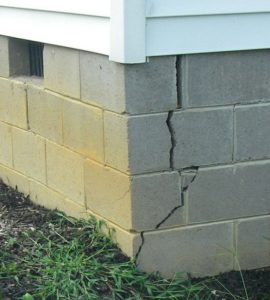 Does the efficient proximate cause rule serve to afford coverage for the additional costs to rebuild the foundation of a home in compliance with changed building code requirements beyond the sublimit of liability of an optional building ordinance or law endorsement? In an opinion ordered published on December 21, 2016, the Washington Court of Appeals said no, denying a homeowner the full cost of a new foundation as part of the repair of fire damage. Lesure v. Farmers Ins. Co. of Washington, Wash. App. No. 48045-0-II, 9/20/16 (ordered published 12/21/16).
Does the efficient proximate cause rule serve to afford coverage for the additional costs to rebuild the foundation of a home in compliance with changed building code requirements beyond the sublimit of liability of an optional building ordinance or law endorsement? In an opinion ordered published on December 21, 2016, the Washington Court of Appeals said no, denying a homeowner the full cost of a new foundation as part of the repair of fire damage. Lesure v. Farmers Ins. Co. of Washington, Wash. App. No. 48045-0-II, 9/20/16 (ordered published 12/21/16).
Loretta Lesure insured her home under a policy issued by Farmers Insurance Company of Washington. Coverage A of the policy covered the cost to repair or replace the dwelling up to the policy limit of $112,000. The policy excluded coverage for direct or indirect loss resulting from the “[e]nforcement of any ordinance or law regulating construction, repair or demolition” of the dwelling, unless endorsed by the policy. Lesure purchased an optional endorsement that covered building code and ordinance upgrades, with a liability limit of 10% of the policy’s limit for covered property. Thus, the endorsement’s limit was $11,200.
A fire partially damaged Lesure’s home. The replacement cost estimate for the damage was $22,248.25. Because the home did not comply with current building codes, the city required that it be demolished and rebuilt to conform to code. In particular, the home required a new foundation. The estimate to rebuild her home with the code-required updated foundation was $125,397.12.
Farmers offered to pay $21,748.25, the replacement cost of the fire damage less a $500 deductible, plus $11,200 for repairs related to code compliance, which was the endorsement’s limit, for a total of $32,948.25. Lesure rejected the offer and demanded payment of the full dwelling limit of $112,000 plus the endorsement’s limit, for a total of $123,200. Farmers denied her request and she sued.
After Farmers prevailed at summary judgment, Lesure appealed. She argued that the trial court failed to apply Washington’s efficient proximate cause (EPC) rule, which would have resulted in an award of the full dwelling limit plus the endorsement limit. According to her, fire was the efficient proximate cause of the entire loss, including that part of the loss due to the enforcement of the building code. Under her theory, since fire was a covered peril, the entire loss was covered under the rule.
The Court of Appeals disagreed and affirmed the trial court’s grant of summary judgement to Farmers. Washington’s EPC rule applies only when two or more perils combine in sequence to cause a loss. If the predominant or efficient peril is covered, then the entire loss is covered, even if the other contributing peril is excluded. However, where only one cause results in the loss, the EPC rule does not apply.
Here, the damage to Lesure’s home was caused by fire, a covered peril. There was no contributing uncovered peril. The appellate court stated, “Non-compliance with a city’s building code is not a peril. There is no chain of events.” Slip op. at 7. Therefore, the EPC rule did not apply and could not trigger coverage for the additional repair costs due to building code violations. “Farmers’ original obligation under Coverage A is to provide similar construction in rebuilding the partially damaged home. This does not include paying for required code upgrades. Instead, the policy provided for necessary code upgrades by the optional endorsement. The endorsement is the sole source of the obligation to pay for bringing the remodeled home up to code.” The EPC rule cannot be used to increase coverage for additional costs to rebuild a home in compliance with changed building code requirements beyond the endorsement’s sublimit of liability.

